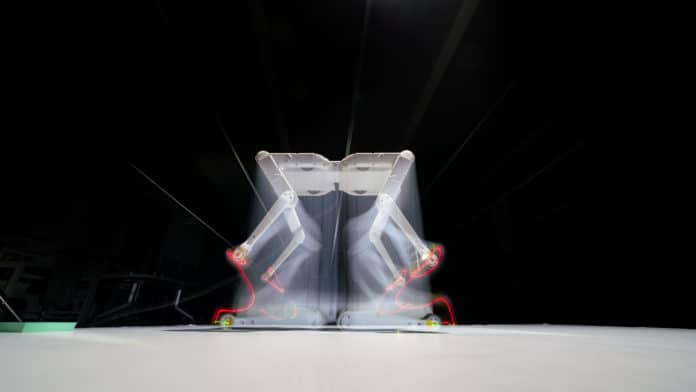Many researchers, startups intend to use robots to experiment with real-world physical actions like walking, jumping, and navigating uneven terrains. But these open-source robots are often very expensive for many – for example, Boston Dynamics’ Spot robot is available at a price of $74,500.
In this regard, the researcher team at the NYU Tandon School of Engineering and an institute of the Max Planck Society, has designed a relatively low-cost, easy-and-fast-to-assemble quadruped robot that makes sophisticated robotics available to all. Called “Solo 8,” it is an open-source, dog-sized robot that can be upgraded and modified, opening the door to sophisticated research and development to teams on limited budgets, including those at startups, smaller labs, or teaching institutions.
Solo 8 includes torque-controlled motors and actuated joints that allow it to behave like far more expensive robots. It can jump, multiple walk-in configurations and directions, and recover orientation, posture, and stability after being overturned.
The robot weighs just over 2 kilograms and has a very high power to weight ratio. Not to mention that all Solo 8 components can be 3-D printed or purchased from a store, and the building files are freely available online. This allows other researchers to take advantage of the modular configuration by prototyping and developing their own technology.
According to the designers, it can work easier and safer than most other quad-footed robots, with an estimated price of a few thousand Euros. It is also more accessible to greater numbers of researchers and instructors than a store-bought legged robot. Additionally, complex control and learning algorithms can be tested on the platform that decreases the time from idea to experimental validation.
The Solo 8 carries eight actuated joints, which help each robotic leg can change its angle and length. The first tests have been conducted with 12 degrees of freedom, three per leg. The new robot can now also step sideways.
“Our robot platform is a great base to quickly prototype and builds high-performance hardware,” said Ludovic Righetti, associate professor of electrical and computer engineering and mechanical and aerospace engineering at NYU Tandon. “In return, we benefit, because other researchers can contribute to the project; for example, colleagues at the LAAS-CNRS in France have developed an electronic board to help communicate with the robot over WiFi.“
“It greatly simplifies our research, and our open-source approach allows us to compare algorithms with other laboratories.“
